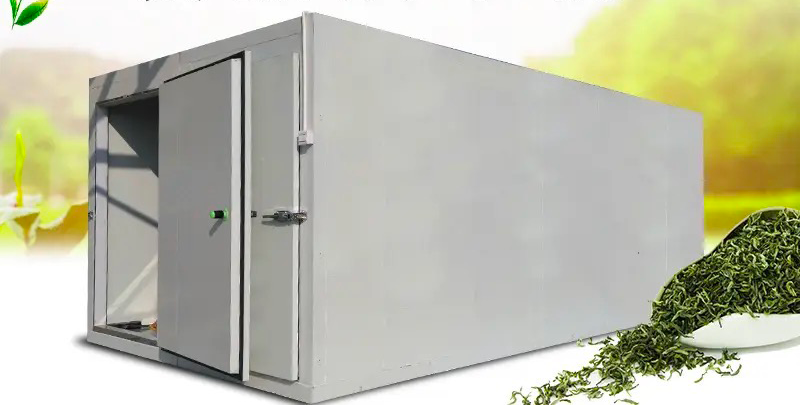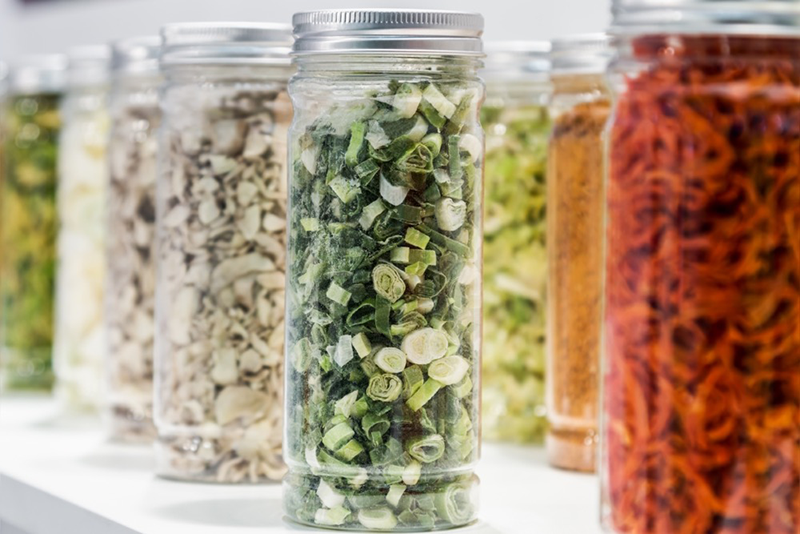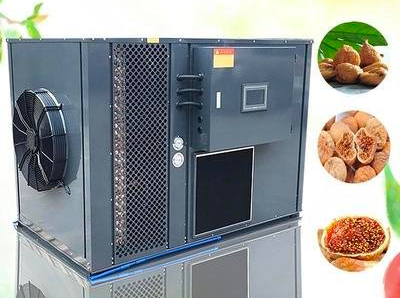
Content Menu
● Understanding Food Drying Machines
>> Benefits of Food Drying
● Heat Pump Dryers vs. Condenser Dryers
>> Heat Pump Dryers
>> Condenser Dryers
● Comparative Analysis
● Applications of Food Drying Machines
● Choosing the Right Dryer for Your Needs
● Innovations in Food Drying Technology
● Expanding Further on Food Drying Techniques
>> Types of Foods Suitable for Dehydration
>> Common Mistakes When Using Food Dehydrators
● Future Trends in Food Dehydration
● Conclusion
● Frequently Asked Questions (FAQ)
>> 1. What is the main difference between a heat pump dryer and a condenser dryer?
>> 2. Are heat pump dryers more energy-efficient than condenser dryers?
>> 3. Can I dry delicate fabrics in both types of dryers?
>> 4. How do I maintain my food drying machine?
>> 5. Is it worth investing in a heat pump dryer?
● Citations:
In the realm of drying appliances, understanding the differences between heat pump dryers and condenser dryers is essential for making an informed choice. Both types serve the same fundamental purpose—drying food—but they operate on different principles and offer distinct advantages and disadvantages. This article will explore these differences in detail while also providing insights into food drying machines, which are crucial for preserving food quality and extending shelf life.

Understanding Food Drying Machines
Food drying machines, also known as dehydrators, are specialized appliances designed to remove moisture from food products. This process not only preserves food but also enhances flavors and textures. Food drying is particularly beneficial for fruits, vegetables, herbs, and meats. The primary methods of drying include:
- Convection Drying: Uses hot air circulation to evaporate moisture.
- Vacuum Drying: Lowers the boiling point of water by reducing atmospheric pressure, allowing for lower temperature drying.
- Freeze Drying: Involves freezing the food and then reducing the surrounding pressure to allow the frozen water in the food to sublimate directly from solid to gas.
Food dryers can vary significantly in design and functionality, but they typically feature adjustable temperature settings, timers, and trays for even drying.
Benefits of Food Drying
The benefits of using food drying machines extend beyond mere preservation. Here are some key advantages:
- Nutrient Retention: Proper drying techniques can help retain essential vitamins and minerals in fruits and vegetables compared to other preservation methods like canning.
- Flavor Enhancement: Dehydrating foods concentrates their flavors, making them more intense and enjoyable.
- Lightweight Storage: Dried foods are significantly lighter than their fresh counterparts, making them easier to store and transport.
- Versatility: Dried foods can be used in various culinary applications, from snacks to ingredients in soups and stews.
Heat Pump Dryers vs. Condenser Dryers
To understand how heat pump dryers differ from condenser dryers, we need to delve into their operational mechanisms.
Heat Pump Dryers
Heat pump dryers use a closed-loop system that recycles air within the dryer. Here's how they work:
1. Air Heating: The dryer uses a heat pump to extract heat from the air inside and transfer it to the clothes.
2. Moisture Removal: Moist air is drawn through an evaporator where moisture condenses into water and is collected in a tank or drained away.
3. Air Recycling: The now-dry air is reheated and circulated back into the drum, allowing for efficient moisture removal without significant energy loss.
Advantages of Heat Pump Dryers:
- Energy Efficiency: They consume significantly less energy compared to traditional dryers.
- Gentle on Fabrics: Operate at lower temperatures (typically around 50-60°C), which minimizes wear on clothes.
- Cost Savings: Although they have a higher initial purchase price, their energy efficiency can lead to lower long-term operating costs.
- Environmentally Friendly: Their low energy consumption makes them a greener option compared to conventional dryers.
Condenser Dryers
Condenser dryers operate differently by using a heating element to warm air before it enters the drum. Here's their operational process:
1. Heating Air: A heating element raises the temperature of incoming air.
2. Drying Process: The hot air is circulated through the drum, evaporating moisture from the clothes.
3. Condensation: The moist air is then cooled in a condenser unit where water condenses and is collected in a tank or drained away.
Advantages of Condenser Dryers:
- Faster Drying Times: Generally dry clothes quicker than heat pump dryers due to higher operating temperatures (70-75°C).
- Lower Initial Cost: Typically less expensive upfront compared to heat pump models.
- Installation Flexibility: They do not require external venting, making them suitable for apartments or homes without vent access.
Comparative Analysis
| Feature | Heat Pump Dryer | Condenser Dryer |
| Energy Efficiency | High | Moderate |
| Operating Temperature | Low (50-60°C) | High (70-75°C) |
| Initial Cost | Higher | Lower |
| Drying Time | Longer | Shorter |
| Fabric Care | Gentle (less shrinkage) | Can cause shrinkage |
| Water Collection | Tank or drain option | Tank or drain option |
Applications of Food Drying Machines
Food drying machines play a crucial role in various industries:
- Agriculture: Preserving surplus produce for off-season sales ensures that farmers maximize their harvests without waste.
- Food Processing: Creating dried fruits, vegetables, and snacks that have extended shelf lives allows manufacturers to offer diverse products year-round.
- Culinary Arts: Enhancing flavors through dehydration techniques used by chefs provides unique flavor profiles that cannot be achieved through other cooking methods.

Choosing the Right Dryer for Your Needs
When deciding between a heat pump dryer and a condenser dryer, several factors should be considered:
1. Frequency of Use: If you do laundry frequently, investing in a heat pump dryer may save you money on energy bills over time due to its efficiency.
2. Type of Fabrics: For delicate fabrics that require gentle care, a heat pump dryer is preferable due to its lower operating temperatures.
3. Space Considerations: If space is limited or you live in an apartment without venting options, both types of dryers are suitable as they do not require external venting.
4. Budget Constraints: While heat pump dryers are more expensive upfront, consider long-term savings on energy costs when evaluating your budget.
5. Drying Speed Requirements: If you need quick turnaround times for laundry, a condenser dryer may be more suitable due to its faster drying capabilities.
Innovations in Food Drying Technology
As technology advances, food drying machines have seen numerous innovations that improve efficiency and effectiveness:
- Smart Controls: Modern dehydrators come equipped with smart technology that allows users to monitor drying progress via smartphone apps, providing convenience and precision.
- Energy-Efficient Models: Newer models are designed with enhanced insulation and improved airflow systems that reduce energy consumption while maximizing drying performance.
- Multi-functionality: Some dehydrators now offer additional functions such as yogurt making or fermentation settings, expanding their utility in the kitchen.
Expanding Further on Food Drying Techniques
To further enhance our understanding of food drying machines and their applications:
Types of Foods Suitable for Dehydration
Not all foods dehydrate equally well; understanding which foods work best can optimize your results:
- Fruits: Apples, bananas, strawberries, and mangoes are popular choices due to their natural sugars that concentrate during dehydration.
- Vegetables: Carrots, bell peppers, tomatoes (for sun-dried tomatoes), and zucchini retain flavor well when dried properly.
- Herbs: Basil, parsley, thyme, and oregano can be easily dried without losing much flavor.
- Meats: Jerky production requires specific techniques but yields delicious results when done correctly with proper seasoning before dehydration.
Common Mistakes When Using Food Dehydrators
Even experienced users can make mistakes that impact the quality of dried foods:
1. Overloading Trays: This can restrict airflow leading to uneven drying; always leave space between items.
2. Inconsistent Slicing: Cutting foods into uniform sizes ensures even dehydration; thicker pieces will take longer than thinner ones.
3. Skipping Pre-treatment: Some fruits benefit from pre-treatment (like soaking in lemon juice) to prevent browning during dehydration.
4. Ignoring Temperature Settings: Different foods require different temperatures; follow guidelines for optimal results.
5. Not Storing Properly: Once dehydrated foods cool down completely after processing should be stored in airtight containers away from light and moisture for maximum shelf life.
Future Trends in Food Dehydration
Looking ahead at trends that could shape food dehydration practices:
1. Sustainability: As consumers become more environmentally conscious, there will likely be an increase in demand for dehydrators made from sustainable materials with eco-friendly features.
2. Integration with Smart Home Technology: Future dehydrators may integrate with other smart kitchen devices enabling seamless control over multiple cooking processes from one platform.
3. Focus on Health: With ongoing interest in healthy eating habits driven by awareness around nutrition—dehydrated snacks could see growth as alternatives to processed snacks high in sugar or preservatives.
4. Customization Options: Consumers might seek out dehydrators offering customizable settings tailored specifically towards their unique dietary preferences or culinary needs—enhancing user experience further than ever before!
In summary, whether you're considering investing in a new laundry dryer or exploring options within food preservation technology—being informed about these various systems will empower you toward making choices best suited not only towards functionality but also personal lifestyle preferences!
Conclusion
Choosing between a heat pump dryer and a condenser dryer ultimately depends on individual needs regarding energy efficiency, fabric care, initial investment, and drying speed. Heat pump dryers are ideal for those prioritizing energy savings and gentle care for delicate fabrics. In contrast, condenser dryers might be more suitable for users who need quick drying times at a lower initial cost.
In addition, understanding food drying technology can enhance your ability to preserve food effectively while maintaining quality. Whether you are looking to invest in a dryer for laundry or a food dehydrator for kitchen use, being informed about these technologies will help you make better purchasing decisions.

Frequently Asked Questions (FAQ)
1. What is the main difference between a heat pump dryer and a condenser dryer?
The main difference lies in their operation; heat pump dryers recycle hot air at low temperatures for energy efficiency, while condenser dryers use heated air at higher temperatures for faster drying.
2. Are heat pump dryers more energy-efficient than condenser dryers?
Yes, heat pump dryers are significantly more energy-efficient due to their lower operating temperatures and recycling of hot air.
3. Can I dry delicate fabrics in both types of dryers?
Heat pump dryers are gentler on fabrics due to lower temperatures, making them suitable for delicate items. Condenser dryers may cause shrinkage or damage to sensitive materials.
4. How do I maintain my food drying machine?
Regularly clean trays and ensure proper airflow around the machine. Follow manufacturer guidelines for maintenance checks.
5. Is it worth investing in a heat pump dryer?
If you frequently do laundry and want to save on energy costs over time while protecting your clothes, investing in a heat pump dryer can be worthwhile despite its higher initial price.
Citations:
[1] https://www.sohu.com/a/479972028_120462847
[2] https://www.ikemachinery.com/cabinet-food-drying-machine/medium-capacity-cabinet-food-dryer-for-fruit-and-meat.html
[3] https://www.greencentral.co.uk/heat-pumps/heat-pump-vs-condenser-dryer/
[4] https://www.coolblue.nl/en/advice/heat-pump-dryer-or-condenser-dryer.html
[5] https://www.ike.cn/ike-industrial-commercial-food-dryer-machine-easy-installation-for-food
[6] https://www.istockphoto.com/photos/food-dehydrator
[7] https://baike.baidu.com/item/%E7%83%98%E5%B9%B2%E6%9C%BA/10157795
[8] https://www.benchfoods.com/products/32-tray-vertical-dehydrator-2
[9] https://www.youtube.com/watch?v=A5Nf2P7-nbU
[10] https://www.youtube.com/watch?v=l81gCTvoUjg











